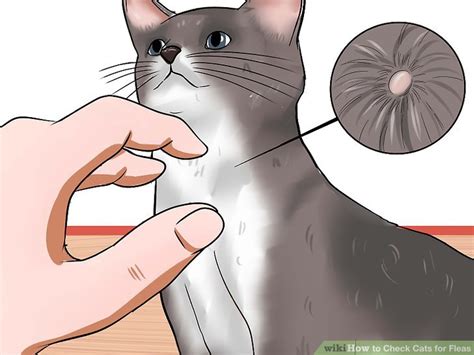How to Tell if Your Cat Has Fleas: A Comprehensive Guide
Finding fleas on your beloved feline can be distressing, but early detection is key to effective treatment. This guide will equip you with the knowledge to identify a flea infestation and take the necessary steps to protect your cat's health and well-being.
Common Signs of Fleas on Cats
While seeing a flea directly is the most definitive sign, several other indicators can alert you to a potential infestation. Pay close attention to these:
Visible Fleas:
- Adult Fleas: These are small, dark-brown insects that move quickly. Look closely in your cat's fur, particularly around the neck, belly, and tail. They're often easier to spot on lighter-colored cats.
- Flea Dirt: This isn't actual dirt, but flea excrement. It looks like tiny black specks that resemble pepper. If you dampen a flea comb after combing your cat and the specks turn reddish-brown, it's confirmed flea dirt.
Behavioral Changes and Symptoms:
- Excessive Scratching and Grooming: This is often the first sign cat owners notice. Constant scratching and biting can lead to skin irritation and hair loss.
- Restlessness and Irritability: Fleas can cause intense itching and discomfort, making your cat restless, anxious, and more irritable than usual.
- Hot Spots: These are inflamed, irritated areas on the skin caused by excessive scratching. They often appear red, swollen, and may have scabs.
- Hair Loss: Continuous scratching can lead to patches of hair loss, particularly around the hindquarters, tail, and neck.
- Pale Gums: In severe cases, heavy flea infestations can lead to anemia, resulting in pale gums. This requires immediate veterinary attention.
Where to Check Your Cat for Fleas
Fleas tend to congregate in areas with thick fur, where they can easily feed. Focus your examination on these areas:
- Neck and Shoulders: Fleas often hide in the thicker fur around the neck and shoulders.
- Belly and Underside: The belly is another common hiding spot for fleas, particularly in long-haired cats.
- Tail Base: The base of the tail is another area where fleas frequently accumulate.
- Between the Legs and Paws: Check carefully between the paws and legs for any signs of fleas or flea dirt.
Using a Flea Comb
A fine-toothed flea comb is invaluable for detecting fleas and removing them from your cat's fur. Here’s how to use one effectively:
- Comb systematically: Work your way through your cat's fur, section by section, paying close attention to the areas mentioned above.
- Check the comb frequently: After each stroke, examine the comb carefully for fleas or flea dirt.
- Clean the comb regularly: Rinse the comb thoroughly after each use to remove any collected fleas and debris.
When to See a Veterinarian
While you can treat mild flea infestations at home, it's essential to consult a veterinarian if:
- Your cat shows signs of anemia (pale gums).
- The infestation is severe.
- Home remedies aren't effective.
- Your cat has allergies or other underlying health conditions.
Remember: Early detection and prompt treatment are crucial for preventing severe health complications associated with flea infestations. Regular grooming and flea prevention are essential for maintaining your cat's health and happiness.
